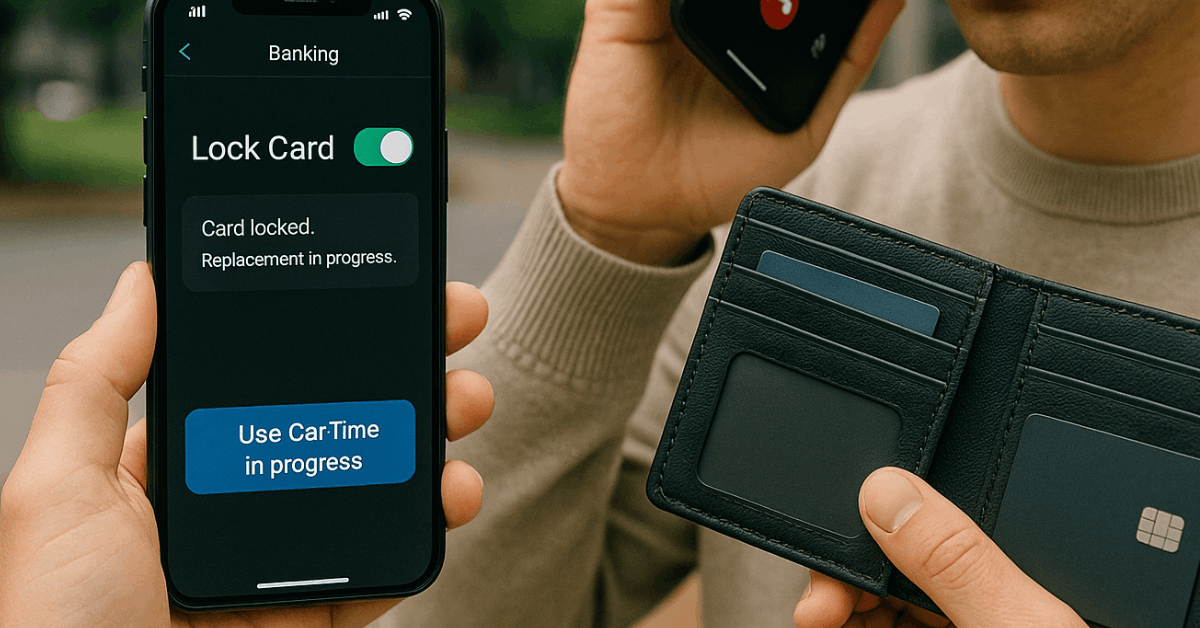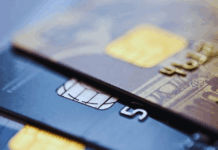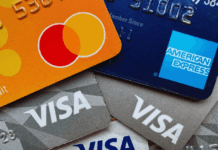Online shopping and contactless payments save time, yet every digital swipe exposes your account to determined fraudsters worldwide.
Use the measures below to keep control of your credit card, money, and your peace of mind.
Credit Card Threats
Cybercrime grows in lockstep with global e-commerce. Criminals now target card data through phishing emails, fake checkout pages, and data-breach marketplaces.

A stolen card number can fund unauthorized purchases in minutes, leaving you to dispute charges and rebuild your credit standing.
Typical threats you face today:
- Phishing pages that collect log-in credentials and card details.
- Data breaches at retailers or processors that leak stored payment profiles.
- Network snooping on public Wi-Fi to capture transaction data.
- Physical skimmers attached to terminals that clone magnetic-stripe information.
Recognizing these risks equips you to build layers of protection before attackers even try.
Limit Exposure Through Smart Account Management
Reducing the number of cards and credentials in circulation narrows every attacker’s target zone.
Use a Dedicated Online Shopping Card
Keeping one card reserved for internet purchases simplifies monitoring and caps potential damage.
- Activate real-time email or SMS alerts for every transaction.
- Review that single statement daily for charges you do not recognize.
- Check out as a guest when possible so merchants do not store your details.
- Decline optional “save my card” prompts on unfamiliar sites.
Deploy Virtual Numbers and Dynamic CVV Codes
Many issuers worldwide now offer disposable card numbers or rotating CVVs inside their mobile apps.
Those temporary credentials work once, then expire, shielding the permanent account from leaks. Enable the feature whenever the option appears during checkout.
Strengthen Digital Defenses
Attackers often exploit weak passwords and outdated software rather than the payment network itself.
Create Passwords Attackers Cannot Guess
Combine uppercase and lowercase letters, numbers, and symbols in passphrases at least 12 characters long.
A sentence such as “Fencing&JazzPuzzles29!” is easier to remember than a random string yet far harder for automated tools to crack. Store unique passwords in a reputable manager so no two sites share the same key.
Keep Every Device Updated
Operating-system and browser patches frequently close security holes that criminals rely on. Enable automatic updates on phones, tablets, and computers to install fixes as soon as they become available.
Run Comprehensive Security Software
Choose an antivirus or all-in-one internet-security suite that covers desktops and mobile platforms.
Continuous scanning blocks malicious downloads and warns you about risky sites before any payment occurs.
Shop Only on Secure Connections
Encryption and trusted networks stop eavesdroppers from reading payment data in transit.
Verify Site Encryption
Look for https:// and a padlock icon in the address bar before entering card details. While no certificate is perfect, the absence of encryption almost guarantees trouble.
Stick to Recognized Retailers
Reputable merchants invest in security audits and transparent privacy policies. If a store’s design appears unprofessional or its contact information feels vague, buy elsewhere.
Avoid Public Wi-Fi for Payments
Open hotspots at cafés, airports, and malls allow anyone on the network to sniff unencrypted traffic. Use mobile data or a virtual private network (VPN) whenever you must pay away from home.
Secure-network checklist:
- Prefer personal cellular connections instead of free Wi-Fi.
- Activate a trusted VPN to encrypt traffic on shared networks.
- Disable automatic Wi-Fi connection on phones to prevent rogue access points.
Harness Built-In Card Protections
Modern issuers include multiple tools that stop fraud before it drains your limit.
Enable Real-Time Alerts
Push notifications flag purchases seconds after they occur, giving you the chance to block further activity immediately.
Rely on Zero-Liability Policies
Most global card networks promise you will not pay for unauthorized charges once they are reported. Read the policy so you know time limits and documentation requirements.
Freeze or Limit Spending on Demand
Many apps now offer a “lock card” toggle and granular spending caps. Freezing stops new transactions while allowing recurring bills to clear, an ideal safeguard when the card’s location is uncertain.
Embrace Contactless and Digital Wallets
Tokenization technology swaps static card data for one-time codes, slashing the value of any stolen information.
| Security Feature | How It Protects You | Extra Benefits |
| Contactless cards | Generate a unique transaction code at each tap. | Quicker checkout and less terminal wear. |
| Mobile wallets | Pass encrypted tokens instead of card numbers. | Remote wallet lock and instant card reissue. |
| Dynamic CVV | Changes security code at set intervals. | Renders stolen data useless within hours. |
Adding your card to Apple Pay, Google Wallet, or another mobile service keeps the actual number out of merchants’ systems and allows biometric confirmation for every purchase.
Act Fast When Something Goes Wrong
Rapid action often limits fraudulent losses to a single small transaction.
Lost or Stolen Card Procedures:
- Open your banking app or call the issuer immediately.
- Block the card permanently and request a replacement.
- Review recent activity and dispute any unfamiliar charges.
- Follow issuer instructions for replacement delivery and fees.
Delays give criminals more time to test small purchases before moving on to larger ones, so treat every misplaced card as an emergency.
Smart Habits on the Go
Travel changes spending patterns, occasionally triggering fraud filters that protect you.
Notify Your Issuer Before Trips
Advance notice prevents legitimate charges in new regions from being declined and flags genuine fraud attempts that occur back home while you are abroad.
Keep Backup Details Safely Stored
Photocopy the front and back of each card or save encrypted scans in a password manager. Having issuer phone numbers handy speeds up replacement if your wallet disappears.
Practice Everyday Cyber Awareness
Staying alert online closes many openings that criminals exploit.
- Ignore unsolicited offers promising unbelievable discounts or free items.
- Delete messages claiming to be from government agencies requesting payment details.
- Type a retailer’s URL manually instead of clicking links sent via email.
- Refuse to share personal information with callers you did not contact first.
Small moments of skepticism often prevent large financial headaches later.
Monitor Credit Reports and Accounts Regularly
Fraudulent activity occasionally surfaces first through credit-bureau updates rather than account alerts.
Order free credit reports in your country or use issuer-provided monitoring tools. Review balances, recent pulls, and newly opened lines each month to catch identity theft early.
Conclusion
Consistent vigilance, layered technology, and decisive action transform credit cards into safe, convenient payment tools worldwide. Follow the strategies above, and every swipe becomes a confident choice rather than a gamble.



